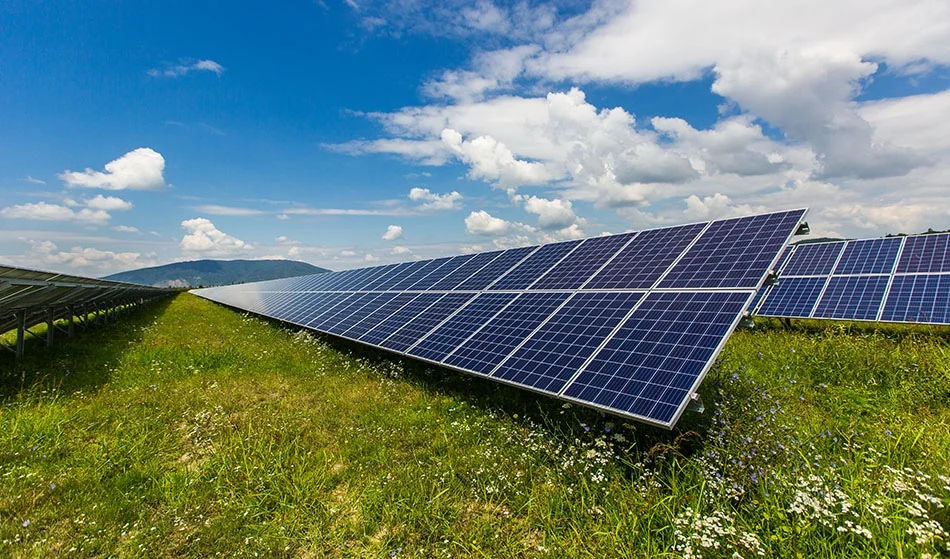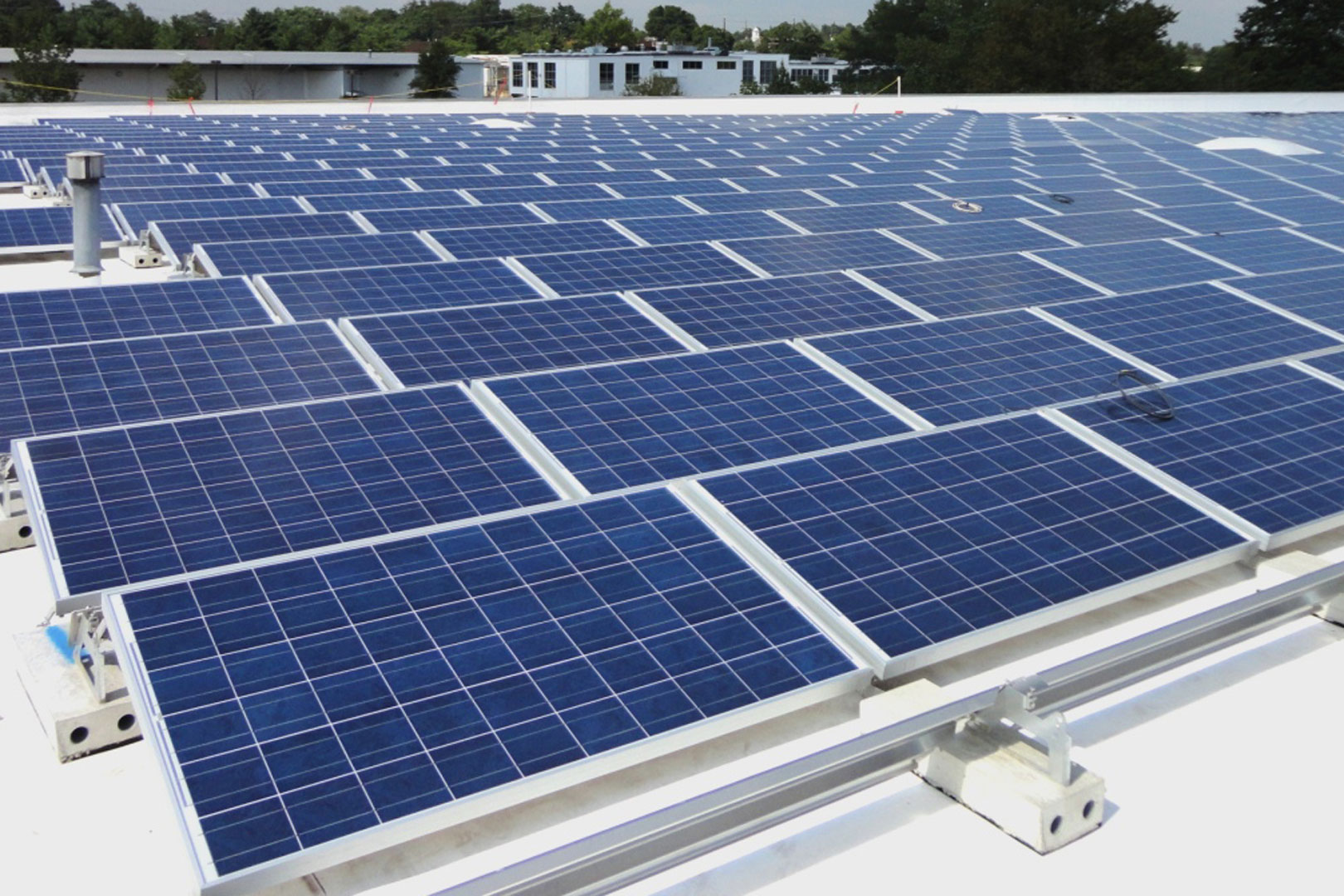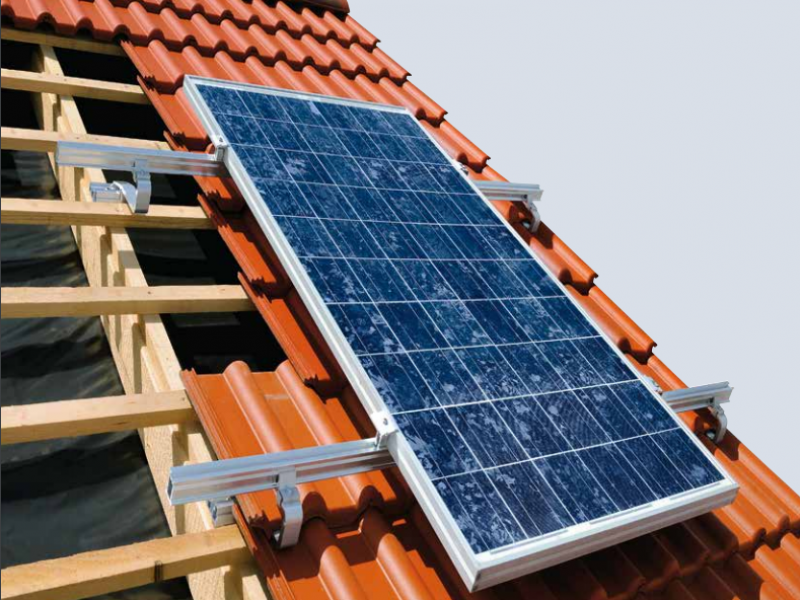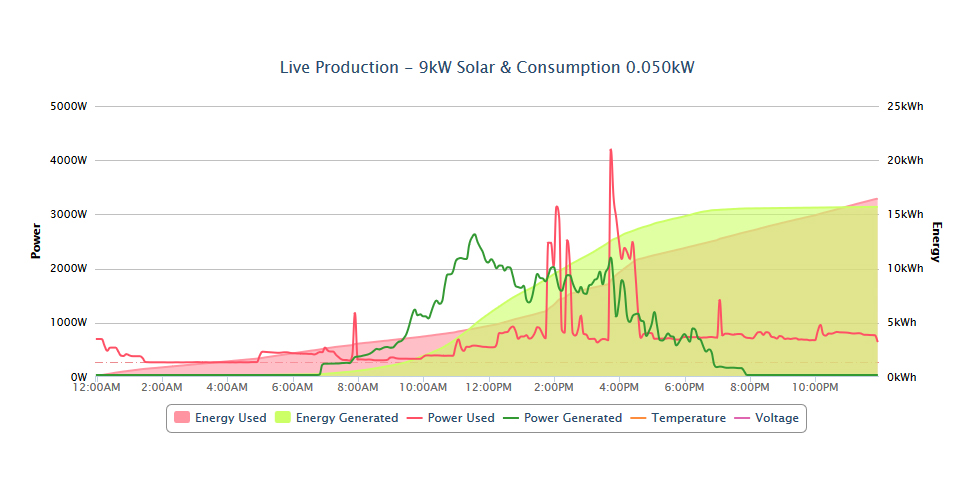Photovoltaic Solar Cells
Solar cells, or photovoltaic cells, are advanced devices that capture sunlight and convert it into electricity using the photovoltaic effect. Made from semiconductor materials, these cells generate electrical charges when exposed to sunlight. The absorbed light excites electrons in the semiconductor, creating an electric current as the energized electrons move through the material.
A key feature of solar cells is their ability to directly transform solar radiation into usable electrical energy, making them a sustainable and eco-friendly power source. Over time, improvements in efficiency have made solar cells increasingly suitable for a variety of applications, from residential solar panels to large-scale solar power plants.
Solar cells are essential in renewable energy systems, helping reduce reliance on fossil fuels and lower the environmental impact of traditional energy sources. As technology progresses, ongoing research continues to improve the efficiency, durability, and cost-effectiveness of solar cells, contributing to a greener, more sustainable future.

Three Main Types of PV Cell/Module
Advantages of PV Power Technology
- No moving parts (reliable)
- Very low operation and maintenance costs (free fuel)
- No noise, no atmospheric pollution in operation (environmental benefits)
- Modular structure (quick installation, easy enlargement)
- Power generation where needed (no transmission losses)
Types of PV System
- Stand-alone: a PV array with or without a battery bank wired to the end-use appliances.
- Grid-connected (including building-integrated)
- Grid back-up (one-way grid-connected system): the grid merely acts as an auxiliary supply and no feedback is allowed to the grid.
- Grid interactive: the grid may also receive excess power from the PV generator
- Grid-Connected PV Systems seamlessly integrate with the electrical grid, allowing surplus energy to be exported and reducing electricity costs. Ideal for urban areas, these systems require no batteries and benefit from net metering incentives. However, they depend on grid stability.
- Standalone PV Systems operate independently, making them perfect for remote locations. They offer energy independence and flexibility but often require battery storage for continuous power supply.
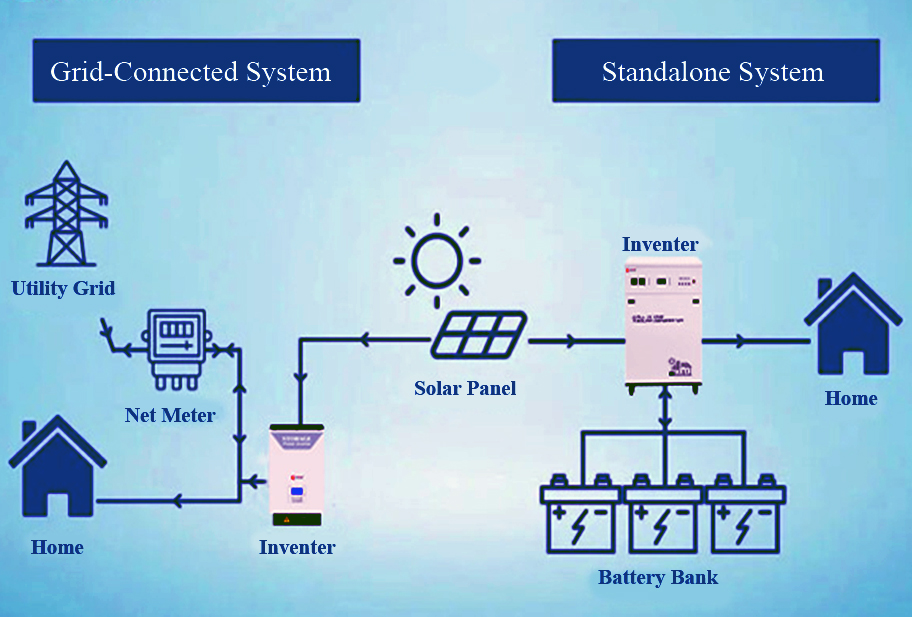
Benefits of BIPV (Building Integrated PV) Power Technology
- No need for extra land area may be utilized in densely populated areas
- No need for additional infrastructure, integrated with other installations
- Supply all or a significant part of building electricity use, reducing
transmission and distribution losses - Provide electricity during peak times, reducing the utility’s peak delivery requirements
- Replace conventional building materials, reducing the payback period
- Provide an innovative, aesthetic appearance for the building.
Methods of Roof Mounting
- Stand-off mounting: Modules are mounted on a frame parallel to the weatherproof surface.
- Integral mounting: Modules replace conventional building materials, enhancing aesthetics and functionality.
Site for BIPVs:
- The site needs to have good access to solar radiation.
- The site/building should be as free from shading as possible.
- There should be no plans to develop adjacent sites which might substantially shade the site later.
Façade Mounting Features:
- Subject to shading
- Lower performance
- Clearly visible, showing environmental awareness
- Opportunities for additional use.
Roof Mounting Features:
- Less likely to be overshadowed
- Higher performance
- Easier to install
- Less vulnerable to vandalism
- Add weight to the roof
Factors Affecting PV Output
- Temperature: Power output decreases with increasing temperature.
- Ventilation needed across the back of PV modules
- Solar radiation: Power output is directly proportional to solar Radiation which depends on: Location, Tilt, Orientation, Daily and seasonal Variations
- Performance depends on different PV’s tilt angles and Orientations
- Mismatch: If modules with different performance characteristics are connected in series, the ‘poorest’ module determines the current.
- Shading: Minor shading can result in a significant loss of energy for
crystalline silicon modules. - Soiling: Dust and debris lead to shading part of the array

